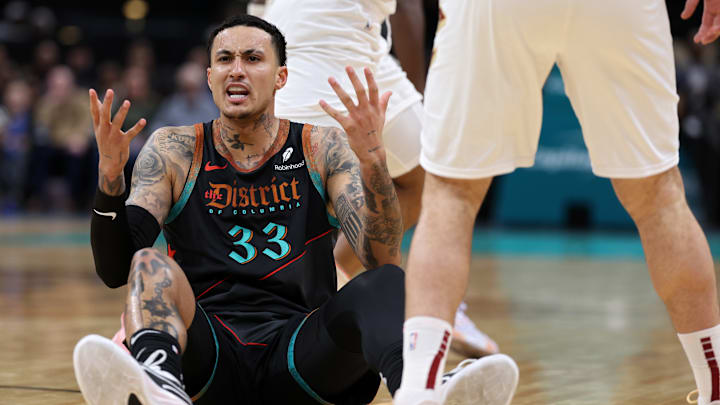Kyle Kuzma's days in Milwaukee are numbered, and the Bucks' front office isn't even trying to hide it anymore. Every move they've made this offseason screams one thing: we're done waiting for you to figure it out. His time with the team could very well be over by the 2026 NBA Trade Deadline.
The Milwaukee Bucks have made one thing clear this offseason: they do not believe in Kyle Kuzma. They have continued to make moves to reduce his role, and signing Amir Coffey is the coup de grâce for his place in the team's plans.
Coffey wasn't acquired to compete with Kuzma — he was brought in to replace him. That's the kind of signing you make when you've already given up on salvaging a bad investment and you're just trying to minimize the damage until you can move on completely.
The Bucks' moves have taken away any semblance of a role for Kuzma
What the front office achieved this offseason is a new level of rotational versatility that finally removes the heavy reliance on Kyle Kuzma.
Cole Anthony delivers pure microwave scoring for the second unit with his shot-creation. Gary Harris offers a seasoned, 3-and-D presence capable of defending the bigger wings. With Kevin Porter Jr., Gary Trent Jr., Taurean Prince, AJ Green, and Ryan Rollins now rounding out the remaining shooting guard and small forward spots, the sheer volume of reliable depth is the real victory.
Look at that depth chart and try to figure out where Kuzma fits. An argument can be made that after what he showed (or failed to show) a season ago, he's simply not getting minutes over younger guys who actually fit what Milwaukee needs. His role has been systematically dismantled piece by piece with Jon Horst's acquisitions this past offseason.
That only means that it's clear the Bucks intend to try to build up Kuzma's value and then trade him for a small forward by the trade deadline. That's the play here: give him enough minutes early in the season to remind teams he can still score, hope he strings together a few decent games, then flip him before his value completely craters.
The timeline makes sense too. Milwaukee can't move him now without attaching their 2031 first-rounder, which would be organizational malpractice. But by the trade deadline, if Kuzma has shown anything remotely positive, some team might take a flier on him without demanding massive draft compensation.
The Bucks need a legitimate starting small forward who can actually defend and space the floor consistently. Kuzma has proven he's not that guy. So they'll spend the first half of the season auditioning him for other teams while their young guys develop behind the scenes.
This isn't about giving Kuzma another chance to prove himself. Milwaukee's already seen enough. This is about asset management—extracting whatever value remains before that contract becomes completely immovable.
Kuzma had his opportunity to be the answer at the three. Instead, he became the problem Milwaukee is now desperately trying to solve. Kuzma is staying on this roster for at least a few more months, but the expiration date on his Bucks career is already stamped: February 2026, trade deadline day.
